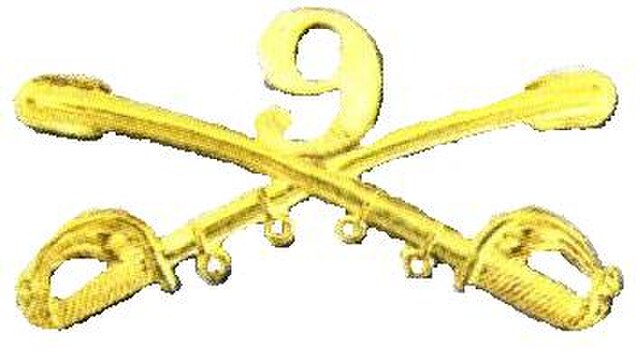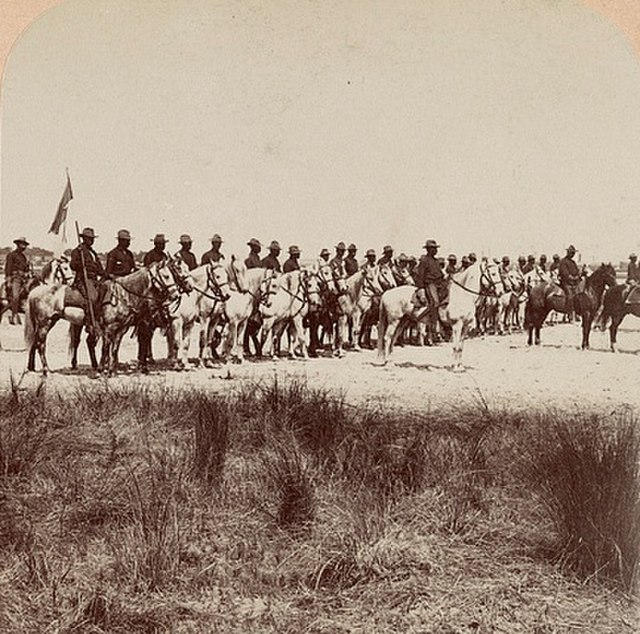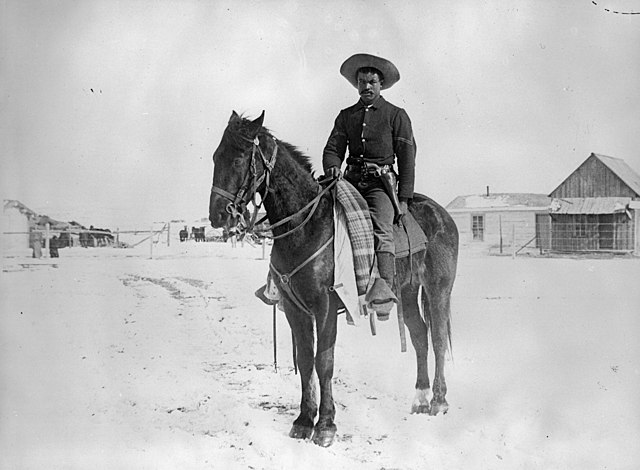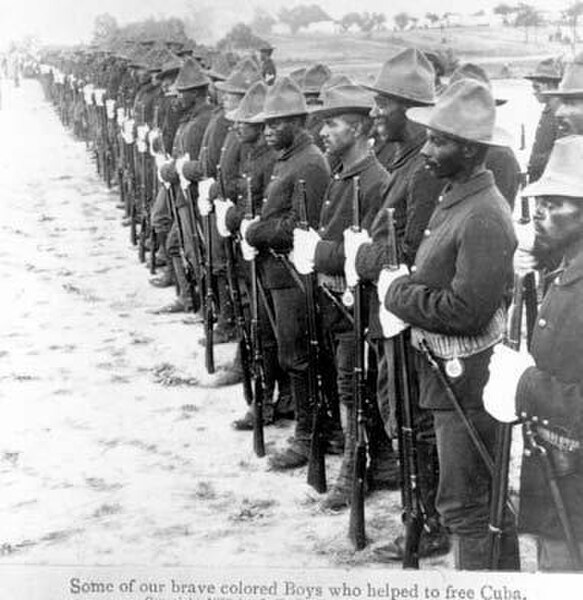John Bigelow Jr. was a United States Army lieutenant colonel. He was the subject of many articles on military frontier life in Outing Magazine published by his brother Poultney Bigelow and with sketches drawn in the field by the then young and obscure Frederic Remington. The book Frontier Cavalryman is based on his journals and service with the Buffalo Soldiers. He received a Silver Star and a Purple Heart for his actions in Cuba. He was assigned as a superintendent of Yosemite National Park in early 1904 and retired from the Army the following September. He became a teacher at the Massachusetts Institute of Technology and later an author of several books. He was recalled to active duty in World War I and served in Washington, District of Columbia until 1919. He retired again and died in 1936 at age 81.
John Bigelow Jr.
Bigelow as a Cadet at United States Military Academy
9th Regiment United States Cavalry insignia
The Buffalo Soldier Monument at Fort Leavenworth, Kansas. It honors the African-Americans troopers and those who led them.
Buffalo Soldiers were United States Army regiments composed primarily of African Americans, formed during the 19th century to serve on the American frontier. On September 21, 1866, the 10th Cavalry Regiment was formed at Fort Leavenworth, Kansas. The nickname "Buffalo Soldiers" was purportedly given to the regiment by Native Americans who fought against them in the American Indian Wars, and the term eventually became synonymous with all of the African American U.S. Army regiments established in 1866, including the 9th Cavalry Regiment, 10th Cavalry Regiment, 24th Infantry Regiment, 25th Infantry Regiment and 38th Infantry Regiment.
Buffalo Soldiers of the 25th Infantry Regiment in 1890
Image taken in 1898 of the 9th U.S. Cavalry.
Buffalo Soldier in the 9th Cavalry, 1890
Buffalo Soldiers who participated in the Spanish–American War








